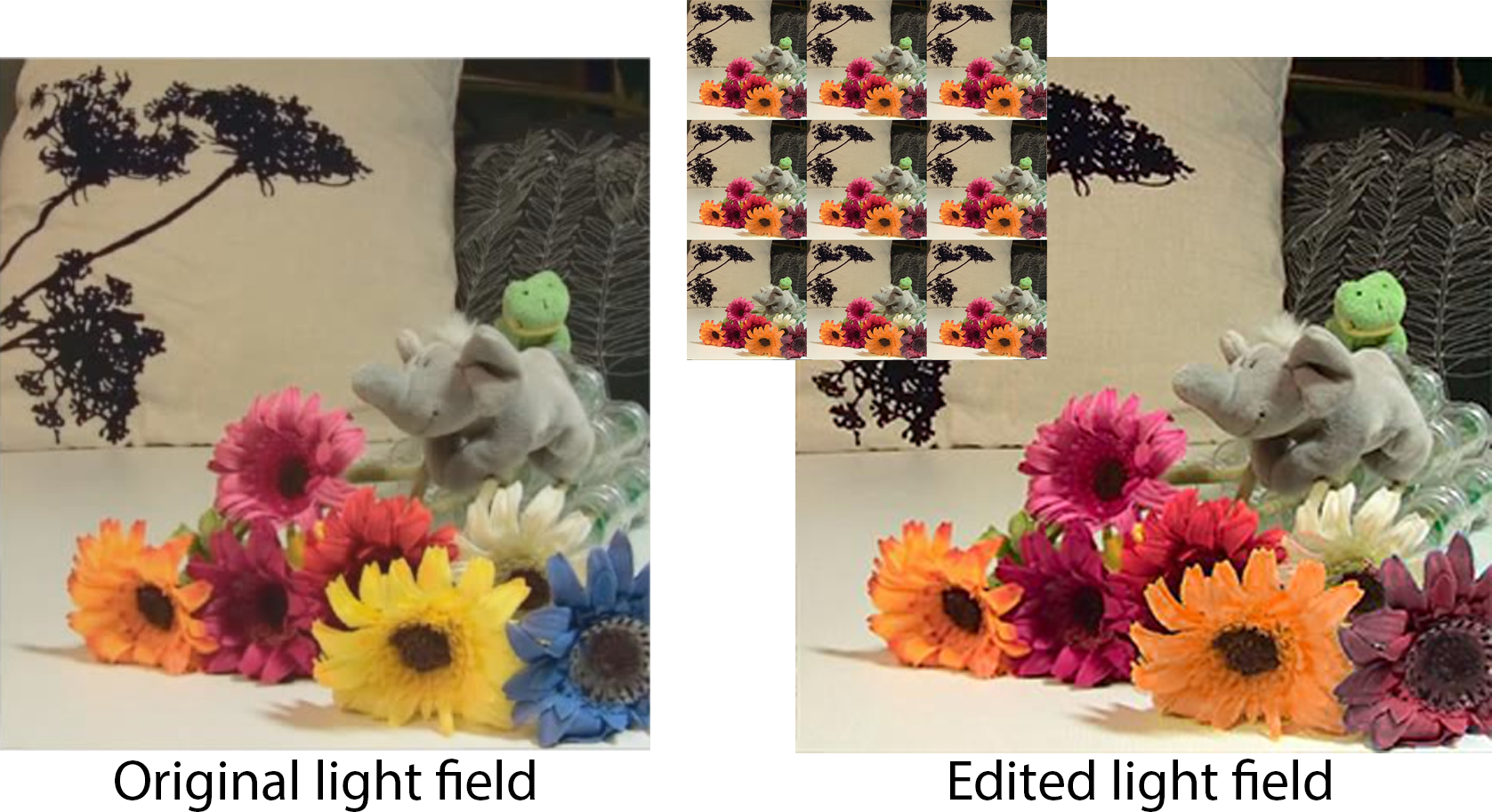News
- September, 2017: Web launched.
Abstract
With the increasing number of available consumer light field cameras, such as Lytro, Raytrix, or Pelican Imaging, this new form of photography is progressively becoming more common. However, there are still very few tools for light field editing, and the interfaces to create those edits remain largely unexplored. Given the extended dimensionality of light field data, it is not clear what the most intuitive interfaces and optimal workflows are, in contrast with well-studied 2D image manipulation software. In this work we provide a detailed description of subjects' performance and preferences for a number of simple editing tasks, which form the basis for more complex operations. We perform a detailed state sequence analysis and hidden Markov chain analysis based on the sequence of tools and interaction paradigms users employ while editing light fields. These insights can aid researchers and designers in creating new light field editing tools and interfaces, thus helping to close the gap between 4D and 2D image editing.
Downloads
Bibtex
Related
- 2017: SIGGRAPH Poster: Analyzing Interfaces and Workflows for Light Field Editing. Poster [PDF, 1.6 MB]. 2-page abstract [PDF, 1.0 MB].
- 2015: Light Field Editing Based on Reparameterization
- 2014: How Do People Edit Light Fields?
- 2014: Favored Workflows in Light Field Editing
- 2011: Efficient Propagation of Light Field Edits
Acknowledgements
We thank the anonymous reviewers for their insightful comments, and the members of the Graphics and Imaging Lab for their help. This project has received funding from the European Research Council (ERC) under the European Union’s Horizon 2020 research and innovation programme (CHAMELEON project, grant agreement No 682080), as well as the Spanish Ministerio de Economía y Competitividad (TIN2016-78753-P and TIN2016-79710-P).
